I Wake Up Screaming

Brief Synopsis
Cast & Crew
Bruce Humberstone
Betty Grable
Victor Mature
Carole Landis
Laird Cregar
William Gargan
Film Details
Technical Specs

Synopsis
After beautiful Vicky Lynn is killed, New York City police question Frankie Christopher, a promoter who sponsored Vicky, "glamorized" her and got her jobs as a model. Especially tough on Frankie is obsessed inspector Ed Cornell, who has never failed to get his man. Jerry MacDonald, a more sympathetic policeman, asks Frankie to tell them how he met Vicky, and Frankie tells his story: One evening, Frankie goes with his friends, fading actor Robin Ray and newspaper columnist Larry Evans, to a lunchroom where Vicky works as a waitress. Impressed with her beauty and ambition, Frankie decides to remake her, take her to all the smart places and put her on top of the world. Soon after, Frankie takes her to the El Chico Club, where Robin and Larry help him to get her invited to the table of the socially influential Mrs. Handel. The first step accomplished, the evening ends with Vicky having been offered two modeling jobs. Vicky then returns home to the modest apartment she shares with her sister Jill, a stenographer. Jill and Vicky argue, for Jill maintains that nothing good can come of taking the easy road to success. After a whirlwind of publicity and offers, Vicky tells Frankie that she has taken a screen test and is going to Hollywood without him. Bitter about her betrayal, Frankie storms out of her apartment and commiserates with Robin and Larry, both of whom have fallen in love with Vicky. As Jill begins relating her side of the story, she informs the policemen that she does not believe that Frankie is guilty of killing her sister. She informs them that before Vicky met Frankie, a mysterious man stalked her, and when Cornell enters the interrogation room, Jill recognizes him as the man who was following Vicky. The police do not believe her story, but she and Frankie are nonetheless released when the assistant district attorney decides that Harry Williams, the switchboard operator at the hotel where Jill and Vicky lived, must be guilty because he has been missing since the murder. After a while, Jill returns to the hotel, where she learns that Harry has been questioned by the police and released because he said that he was visiting his parents. Cornell confronts Jill at her new apartment, accusing her of withholding evidence, and although Jill orders him to leave, she is indeed withholding an angry letter Frankie wrote to Vicky after he found out about her screen test. Determined to find out for herself if Frankie is her sister's killer, Jill spends the evening with him and has a marvelous time. She invites him to her apartment, where she is about to give him the letter when Cornell bursts in, takes the letter and handcuffs Frankie. Jill helps Frankie escape, and after they realize that they are in love, they decide to run away together the next day. After spending the night in an all-night movie theater, Frankie goes to get some money he has hidden in a safety deposit box, and while he is gone, Jill is arrested. Cornell convinces the police chief to free her in the hope that she will lead them to Frankie, but she eludes them and finds Frankie at the theater. They then trace a clue to Larry, who reveals that he took Vicky up to her apartment just before she was killed, and that Harry was not on duty at the switchboard when he left. Their suspicion aroused, Frankie and Jill plan to trap Harry into confessing, which he does. Harry, who was desperately in love with Vicky, also reveals that Cornell knows he killed Vicky, but let him go. MacDonald arrests Harry, while Frankie goes to Cornell's apartment. He is stunned to find that the walls are covered with photographs of Vicky, and on the mantle is a shrine to her. Cornell arrives and bitterly denounces Frankie for "glamorizing" Vicky and taking her away from him, for they had dated a few times and he was hoping to marry her. Cornell drinks poison, and soon the embittered, lonely detective is dead. Later, Frankie and Jill celebrate their marriage by going dancing.

Director

Bruce Humberstone
Cast
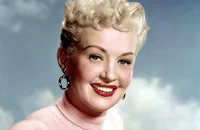
Betty Grable

Victor Mature

Carole Landis

Laird Cregar

William Gargan
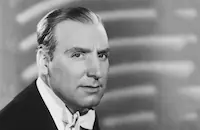
Alan Mowbray
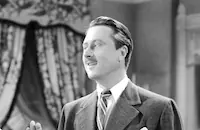
Allyn Joslyn

Elisha Cook Jr.
Chick Chandler
Cyril Ring
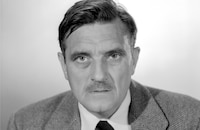
Morris Ankrum

Charles Lane

Gregory Gaye
Mae Beatty
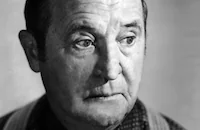
Frank Orth
Basil Walker
Robert Cornell
Stanley Clements
George Hickman
Dick Rich

James Flavin
Tim Ryan

Ralph Dunn
Wade Boteler
Stanley Blystone
Eddie Dunn
Phillip Morris
Cecil Weston
Harry Strang
Russ Clark

Edward Mcwade
Paul Weigel
Harry Seymour
Pat Mckee
Albert Pollet
Dorothy Dearing
Forbes Murray
Crew
Harold Arlen
Arthur Berthelet
Edward Cronjager
Richard Day
Bernard Freericks
Lewis Harris
Roger Heman
Frank L. James
Nathan Juran
William Koenig
Thomas Little
Cyril J. Mockridge
Cyril J. Mockridge
Alfred Newman
Guy Pearce
Ad Schaumer
Robert Simpson
Milton Sperling
Dwight Taylor
Gwen Wakeling
George A. Wright Jr.
Darryl F. Zanuck

Film Details
Technical Specs

Articles
I Wake Up Screaming -
I Wake Up Screaming is a murder mystery adapted from a pulp novel by Steve Fisher, who would go on to write noir screenplays including Dead Reckoning (1947), Lady in the Lake (1947), I Wouldn't Be in Your Shoes (1948) and Roadblock (1951). Here, Victor Mature plays a New York sports promoter who's accused of murdering a beautiful woman (Carole Landis) he had transformed from a waitress into a successful model and actress. Mature teams up with Landis's sister (Betty Grable) to try and solve the murder as a creepy police detective (Laird Cregar) hounds Mature, positive he's the guilty party.
The story anticipates other Fox noirs like Fallen Angel (1945) and especially Laura (1944). Just as in Laura, I Wake Up Screaming presents a female victim as dead right off the bat, tells much of its story in flashback, depicts the male characters as obsessed with the dead woman, and even incorporates a portrait of her into the proceedings. Both films are also located in New York, although Fisher's novel had been set in Hollywood. Fox studio chief Darryl Zanuck had the setting altered to New York as he wasn't partial to movies about Hollywood, and he also changed the title to Hot Spot before production began because he found "I Wake Up Screaming" to be too sensationalistic and disturbing. It was only at the very last minute that he changed it back, after the cast lobbied him to do so.
Zanuck assigned Betty Grable to this picture because he wanted to try broadening her appeal. It was still early enough in her career -- before she became a pinup girl -- that audiences could accept her in such a role. In fact, her wholesome, all-American persona still resonates strongly, and establishes her character as the film's moral center. As film scholar Jeanine Basinger has written: "The film wasn't all that much of a departure for her. She was playing her own familiar type -- just not singing and dancing." Still, Zanuck played up the publicity of his big star acting in such an unusual picture, and the posters declared: "Betty Grable as you've never seen her before!" According to Basinger, when Zanuck considered doing this again by placing her in The Razor's Edge (1946) as "a dipsomaniac whose dead body turns up in the Paris river," Grable shot him down by telling him, "Are you kidding? Fans would expect me to rise up out of the water with lily pads in my hair, singing 'Hooray for Hollywood.'" The difference was that by 1946, Grable was too firmly entrenched as a musical star for such a departure to have worked.
Zanuck presumably was covering his bases when he ordered the filming of a scene in a record shop where Grable sings a song, Harold Arlen's "Daddy," but the number was rightly not included in the finished film. (It can be seen as a supplement on the DVD release.) But Zanuck still made sure to give Grable's fans a little bit of what they expected, by including a totally gratuitous scene in a swimming pool with Grable and Mature in swimsuits -- and Grable's famous legs on full display. Grable was not pleased. "[It] could just as easily have taken place in a drug store or a bar," she said, "but Zanuck would have me and Victor strip down. I loathed that scene."
Victor Mature had appeared in three pictures before this one, but he always thought of I Wake Up Screaming as his first "real" movie. It was certainly his first serious drama and he is superb in it, establishing himself as a credible dramatic actor. He would go on to star with Grable in three musicals -- Song of the Islands (1942), Footlight Serenade (1942) and Wabash Avenue (1950). Mature's interplay here with Laird Cregar is especially effective and entertaining, with crackling dialogue often spoken by Mature at Cregar's expense, such as: "You make me feel like I'm driving a hearse" and "First time I ever had a bad dream with my eyes open." Cregar's hulking presence and soft-spoken voice make for a unique combination. The actor researched his role by accompanying real policemen on calls, and was caught up one night in a real shooting.
And lovely Carole Landis had previously worked with both Mature and Grable. In fact, the two women had also played sisters in their previous film, Moon Over Miami (1941). Landis's character of Vicky in I Wake Up Screaming bore some eerie similarities to Landis in real life. Landis had been waiting tables herself about seven years earlier in San Bernardino, waiting for her own Hollywood break. She got it -- but she also got a decade of heartache and, ultimately, tragedy. She married and divorced several times, was used for sex by film executives, and ultimately was driven to suicide at the age of 29. (In a further strange coincidence, when Landis committed suicide in the summer of 1948, she was actually set to start appearing in a stage version of Laura the next week.) But she had talent and could have become a top star if only she'd been given the chance. Critics often remarked upon her beauty and sex appeal, but not as often on her acting, which was underrated.
Director H. Bruce Humberstone was not usually known for dark, dramatic movies. I Wake Up Screaming is his only real film noir, though he also directed the prison drama Within These Walls (1945). Mostly Humberstone is remembered for a number of Charlie Chan movies and for big musicals like Sun Valley Serenade (1941) and Hello Frisco, Hello (1943). In fact, it was in 1941 that he was promoted out of the 'B' world into these splashy 'A' movies. Working with cameraman Edward Cronjager, with whom he had created some beautiful photographic effects of Sonja Henie skating on black ice in Sun Valley Serenade, Humberstone achieved an extremely stylish look for I Wake Up Screaming, with crisp, high-contrast photography, off-kilter angles, and faces and figures bathed in beautiful darkness. Right from the stunningly composed opening interrogation sequence, this movie shows it's doing something special.
I Wake Up Screaming was a box-office winner. Variety deemed it "first-rate entertainment... Betty Grable is enormously appealing." In 1953, it would be successfully remade as Vicki, starring Jeanne Crain and Jean Peters.
By Jeremy Arnold
SOURCES:
Jeanine Basinger, The Star Machine
Eric Gans, Carole Landis: A Most Beautiful Girl
Ed Hulse, The Films of Betty Grable
Tom McGee, The Girl With the Million Dollar Legs

I Wake Up Screaming -
I Wake Up Screaming - Betty Grable in a Film Noir? I WAKE UP SCREAMING on DVD
Based on a pulp novel by Steve Fisher, the story intriguingly pairs Fox musical sweetheart Betty Grable with Victor Mature as they try to solve the murder of Grable's sister, played by Carole Landis. Mature, a sports promoter, launched Landis' career as a model, and a police detective played by Laird Cregar suspects him of her death. (Cregar is wonderfully effective in this role, finding creepy humor everywhere.) Meanwhile, Mature and Grable fall for one another. Right from the opening police interrogation sequence this movie shows it's doing something special, with stunning frames composed around shadows as much as actors. Flashbacks from more than one character start to piece events together for us - a storytelling device that would soon be as common as double-crossing dames. The plot resolves itself in a way that looks ahead to Fallen Angel (1945), another Fox noir.
The director (H. Bruce Humberstone), cinematographer (Edward Cronjager) and much of the crew of I Wake Up Screaming had just completed Sun Valley Serenade (1941), a film which couldn't be more different. It's a testament to their skill as craftsmen that they did such an outstanding technical job on this one. Grable is effectively cast aginst type and does a very good job. She and Landis are convincing as sisters here, and in fact they also played sisters in their previous film, Moon Over Miami (1941). In a sign that Fox honcho Darryl Zanuck was worried about not giving the fans a song from Miss Grable, the DVD includes a deleted musical number, in which Grable sings Harold Arlen's "Daddy" in a record shop. It's a good thing it was cut because it would have been totally out of place in the finished movie, but it is delightful and it's nice to have a chance to see it.
The film's title was changed to the less-harsh Hot Spot before production began, only to be changed back at the last minute after the cast lobbied Zanuck to do so. Another reason for the change was that Photoplay was planning a serialization of the novel timed to the movie's release, using the original title. Fox Home Entertainment has provided poster art and even a filmed opening credit sequence which uses the alternate title.
Technically, the DVD is outstanding, with Cronjager's cinematography breathtakingly crisp. Extras include Eddie Muller's commentary, the Hot Spot material, Grable's deleted song, poster art and still galleries, and the theatrical trailer (which is surprisingly unappealing). Eddie Muller has done many of these film noir commentaries now, and this may be his best yet. It's just crammed with fascinating information and engaging observations. He's especially good on the often highly entertaining backstories of the bit players, and he's well-spoken about Betty Grable. He attributes her massive popularity to being "sexually appealing without being sexually provocative" and argues that this is not Grable's first dramatic role (as it's usually described), but rather her first dramatic film. It's a good distinction to mull over.
It's nice to see Betty Grable getting some much-deserved attention in the DVD world. Pin-Up Girl (1944) was issued last spring and four more of her musicals are now in release from Fox as "The Betty Grable Collection." As the number one box office star of the 1940s (and the country's highest-paid woman of the time), it's important that her cultural impact be remembered.
Look for bit character actor Charles Lane as a florist. To call him a "veteran" would be an understatement. Mr. Lane has over 300 film and TV appearances dating back to 1931 (including the rent collector at the end of It's a Wonderful Life) and as of 2006, he is alive and well and 101 years old.
For more information about I Wake Up Screaming, visit Fox Home Entertainment. To order I Wake Up Screaming, go to TCM Shopping.
by Jeremy Arnold
I Wake Up Screaming - Betty Grable in a Film Noir? I WAKE UP SCREAMING on DVD
Quotes
How old are you, anyway?- Lady Handel
That, my dear Lady Handel, is a secret that I keep even from my own mother.- Robin Ray
Women are all alike!- Robin Ray
For Pete's sake, what difference does that make? You've got to have them, they're standard equipment.- Larry Evans
What's the good of living without hope?- Jill Lynn
It can be done.- Ed Cornell
When I get all my evidence together, I'm gonna have you tied up like a pig in a slaughterhouse.- Ed Cornell
I'll follow you into your grave. I'll write my name on your tombstone.- Ed Cornell
Trivia
Notes
The working title of this film was Hot Spot. It was initially released as Hot Spot and was reviewed as such by some trade papers. Hollywood Reporter news items noted that Twentieth Century-Fox executives were uncertain about which was better as a release title, and that Photoplay magazine editor Ernest Heyn contributed to their dilemma when he requested permission to run his serialization of the picture's story as I Wake Up Screaming. In November 1941, in Milwaukee, the studio held a "test run" of the picture as I Wake Up Screaming, instead of Hot Spot, to judge the box office reaction. When the film performed well, Steve Fisher's original title was retained. Notes of a June 10, 1941 conference with executive producer Darryl Zanuck, contained in the Twentieth Century-Fox Produced Scripts Collection at the UCLA Arts-Special Collections Library, indicates that the studio briefly considered changing the title to It Can't Happen to Me.
According to Hollywood Reporter news items and the Produced Scripts Collection, Jean Renoir was originally scheduled to direct the picture, which would have been his first in the United States, and George Raft was under consideration for the role of "Frankie Christopher." A May 27, 1941 Hollywood Reporter news item noted that Rouben Mamoulian also considered directing the picture. The songs "Street Scene," "Over the Rainbow" and "Cornell Theme" are instrumental only, and are used as the theme music for the characters "Frankie Christopher," "Jill Lynn" and "Ed Cornell," respectively. Steve Fisher's novel was filmed again by Twentieth Century-Fox in 1953 as Vicki. That film was directed by Harry Horner and starred Jeanne Crain, Jean Peters, Elliott Reid and Richard Boone.















